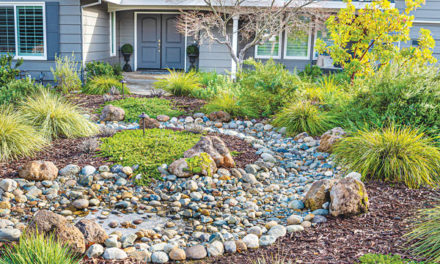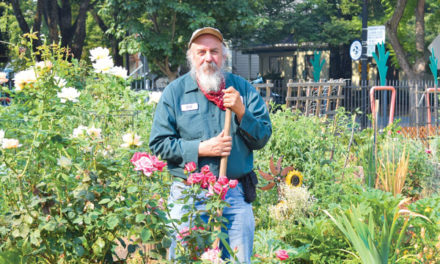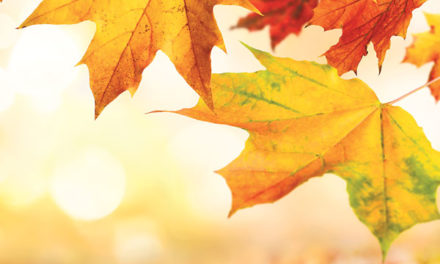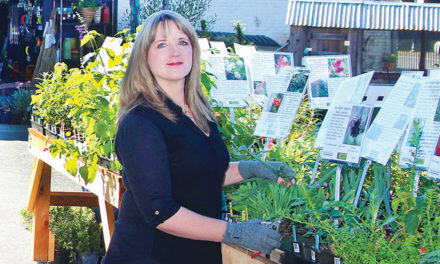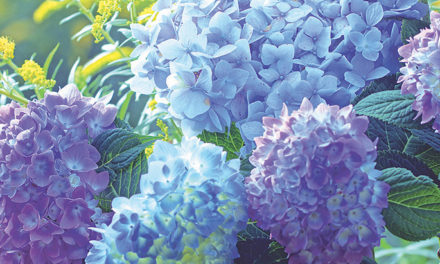Winter Workout
Gardening Now Will Lay Foundation for Months Ahead
By Anita Clevenger
January 2018
Even though it’s tempting to cocoon inside, winter is the time for Sacramento gardeners to pick up our tools and go outdoors. The work that we do in the next few months lays the foundation for the rest of the year.
Winter is pruning season for roses, grapes and most deciduous fruit trees. Pruning encourages the growth of fruiting or flowering branches and controls a plant’s shape and size. Pruning can also improve a plant’s health by removing dead, diseased and damaged growth. Be sure to use sharp clean tools, review proper pruning techniques for each type of plant, and get the job done before buds begin to swell (mid to late February).

Cherry and apricot trees are susceptible to disease if pruned in wet conditions, so prune them after fruit is harvested next summer. Wait to prune spring blooming shrubs and trees, such as spirea, lilac, azalea, camellia, forsythia and quince, until after they flower. Retain most old wood on once-blooming roses, although it’s good to cut off the tip of each cane on all types of roses.
Sanitation is also an important winter gardening task. Clear out weeds where pests can harbor, remove leaves from rose bushes, pick up diseased leaves from under plants and dispose of any fallen fruit.
Many types of weeds are busily germinating and growing. Remove them now
while the soil is moist and before they have a chance to send down deep roots and go to seed.
If you grow peaches, nectarines or apricots, control leaf curl with a carefully timed dormant spray, avoiding rainy and windy days.
Old growth on perennials should be cut back to where new growth is emerging at the base of the plant or on the stems. If a plant is somewhat tender, leave top growth to protect it from frost. As temperatures get milder, don’t be afraid to cut back hard to promote healthy, bushy growth and lots of flowers. Shear warm-season ornamental grasses to about four inches.
Don’t dig, cultivate or walk on wet soil because you can readily compact it, slowing drainage and reducing soil aeration. A good layer of mulch on the surface of planting beds will reduce that risk and suppress weeds.
As you clear out and prune your garden, consider what plants you should remove altogether or move to a better space when the soil is less wet. You may find that some plants are being crowded out, are growing too big or just aren’t performing as you’d like. Some judicious editing will make a garden easier to maintain and give you an opportunity to plant something new. Don’t forget that bulbs and some perennials disappear altogether after they bloom or during the winter. Refer to photographs or garden maps to refresh your memory of what is planted where.
Shaping up your garden now also shapes you up from the exercise, fresh air and much-needed natural light. It’s good for your soul too. Hummingbirds zip by, gathering bits of fluff to make their nests. Other birds feed on seeds and insects. You may even spot a rainbow. Much better than cocooning!
Anita Clevenger is a Lifetime Sacramento County Master Gardener. For answers to gardening questions, contact the UC Master Gardeners at (916) 876-5338 or mgsacramento@ucanr.edu, or visit sacmg.ucanr.edu. Noted rose expert Stephen Scanniello will conduct two pruning workshops Jan. 12 at 9 a.m. and 1 p.m. at the Sacramento Historic Rose Garden, 1000 Broadway. For more information, go to cemeteryrose.org




































